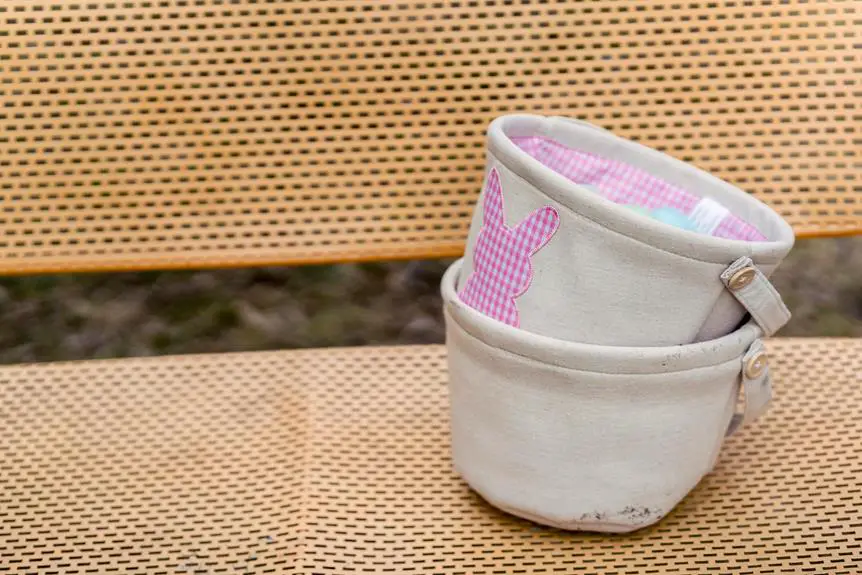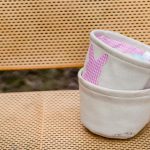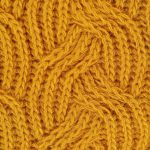When you're working with fabric glue for applique techniques, understanding the nuances of your materials is crucial. You'll want to start by selecting the right fabric and preparing it properly to ensure a smooth application. As you lay out your pieces, consider how a thin layer of glue can make all the difference in achieving a clean finish. But there's more to it than just applying glue; the method you choose can impact the longevity of your project. Curious about the best practices for securing your appliqué and ensuring it stands the test of time?
Table of Contents
Key Takeaways
- Choose the appropriate type of fabric glue based on your project needs, ensuring it suits the fabric weight and intended use.
- Prepare fabric pieces by washing, drying, ironing, and stabilizing to ensure smooth application and durability of the design.
- Apply fabric glue evenly using an applicator tip, avoiding excess to prevent seepage and ensure a strong bond.
- Secure the applique with pins or weights while the glue dries to maintain accurate placement and prevent shifting.
Understanding Fabric Glue Types
When it comes to choosing fabric glue for your applique projects, understanding the different types available can make all the difference. Each type serves a unique purpose, so it's crucial to select the one that best meets your needs.
First off, you've got water-based fabric glue, which is ideal for lightweight fabrics. It dries clear and is easy to clean up, making it a great choice if you're working on delicate projects.
Then, there's permanent fabric glue, which forms a strong bond and is perfect for items that will endure frequent washing or wear.
If you're looking for something that offers flexibility, consider a fabric glue that remains pliable after drying. This is especially useful when you want your applique to move with the fabric rather than stiffen it.
For quick applications, try fabric adhesive spray; it covers larger areas and dries rapidly, but be cautious about overspray.
Lastly, specialty glues like heat-activated adhesives can be handy for more intricate designs. By knowing these options, you can confidently choose the right fabric glue, ensuring your applique projects turn out beautifully.
Preparing Your Fabric Pieces
Properly preparing your fabric pieces is essential for achieving a polished and professional-looking applique. Start by selecting the fabrics you want to use. Choose materials that complement each other in color and texture.
Once you've made your selection, wash and dry your fabrics to remove any sizing or chemicals that could interfere with the glue. Iron them to eliminate wrinkles, as this ensures a smooth surface for your applique.
Next, cut your fabric pieces into the desired shapes. Use sharp scissors or a rotary cutter for clean edges. If you're using intricate designs, consider using a template or stencil for precision. You can also use fabric markers to trace your shapes onto the fabric before cutting.
It's important to stabilize your fabric to prevent fraying. You can do this by applying a lightweight fusible interfacing to the back of your fabric pieces. This step not only reinforces the fabric but also helps maintain your design's shape over time.
Applying Fabric Glue Correctly
With your fabric pieces prepped and ready, it's time to apply the fabric glue for your applique design.
Start by laying your base fabric flat on a clean surface. Position your applique piece where you want it to go, then lift the edge slightly to access the underside.
Using the applicator tip, apply a thin, even line of fabric glue along the edges of your applique piece. Be careful not to use too much glue, as this can cause it to seep through the fabric and create a mess. You want just enough to hold the edges securely without saturating the fabric.
Once you've applied the glue, press the applique down firmly, ensuring it adheres well to the base fabric. If needed, adjust the positioning carefully before the glue sets.
It's also a good idea to use pins or weights to hold the pieces in place while the glue dries.
Techniques for Secure Appliqué
To ensure your applique stays securely in place, consider using a combination of techniques that enhance both adhesion and durability. These methods will help you achieve a polished finish and keep your designs intact for the long haul.
- Layer Your Fabric: Start by layering your fabric correctly. Use a backing material that compliments the top fabric to provide extra support.
- Pin or Baste: Before applying fabric glue, pin or baste your applique in place. This will prevent any shifting during the gluing process, ensuring precise placement.
- Use a Fabric Stabilizer: Consider using a fabric stabilizer, especially for lightweight or stretchy materials. This adds structure and prevents your applique from warping after it's glued.
- Apply Enough Glue: Don't skimp on the fabric glue. Ensure you apply an even layer, particularly around the edges of your applique, to create a strong bond and prevent lifting.
Finishing Touches and Care
After you've glued your applique, it's essential to take a few finishing touches to ensure it looks its best and lasts longer.
First, double-check that all edges are securely glued down. If you notice any lifting, you can apply a bit more fabric glue and press it down firmly.
Next, consider using a pressing cloth and a warm iron to gently press the entire applique. This step helps set the glue and flattens any wrinkles, giving your project a polished appearance. Be sure to use a low heat setting to avoid damaging your fabric.
Once you're satisfied with the appearance, let the piece dry completely. Always follow the drying time recommended by the fabric glue manufacturer, as this can vary.
Creative Project Ideas
Exploring various creative project ideas can unleash your imagination and showcase your unique style with fabric glue and applique techniques. These projects not only allow you to experiment with different fabrics and designs but also help you create personalized items that reflect your personality.
Here are some inspiring ideas to get you started:
- Personalized Tote Bags: Use fabric glue to attach fun shapes or your initials onto a plain tote bag. It's a practical project that adds a personal touch to your everyday carry.
- Decorative Pillows: Transform basic throw pillows by applying colorful fabric pieces in fun patterns. You can create seasonal designs or even custom prints for special occasions.
- Embellished Clothing: Revamp an old shirt or jacket by adding playful appliques. Use themes like floral designs, animals, or geometric shapes to make a fashion statement.
- Quilted Wall Art: Create stunning wall hangings by layering different fabrics and securing them with fabric glue. This project lets you explore textures and colors, making your wall decor truly unique.
Let your creativity flow, and enjoy the process of crafting with fabric glue!
Frequently Asked Questions
Can Fabric Glue Be Used on Non-Fabric Materials?
Yes, you can use fabric glue on non-fabric materials, but results may vary. It's best to test a small area first, ensuring the bond holds well and doesn't damage the materials involved.
How Do I Remove Fabric Glue From My Fabric?
To remove fabric glue, gently scrape off excess with a knife. Then, dab the area with rubbing alcohol or vinegar on a cloth. Wash the fabric in warm water to help lift any remaining residue.
Is Fabric Glue Washable Once Dried?
Yes, fabric glue is generally washable once it's dried, but it's best to check the specific product instructions. You should always test a small area first to ensure it doesn't damage your fabric.
Can I Use Fabric Glue for Outdoor Projects?
You can definitely use fabric glue for outdoor projects, but make sure it's waterproof. Check the label for outdoor suitability, and remember that extreme weather conditions might still affect its durability over time.
What Safety Precautions Should I Take When Using Fabric Glue?
When using fabric glue, you should wear gloves to protect your skin, work in a well-ventilated area to avoid inhaling fumes, and keep it away from children and pets to ensure everyone's safety.
- Tetron Fabric for Marine Applications: Durability and Use Cases - June 18, 2025
- Tetron Fabric for Outdoor Furniture: Weather Resistance and Care - June 18, 2025
- Tetron Fabric for Wall Coverings: Style and Application Tips - June 18, 2025







